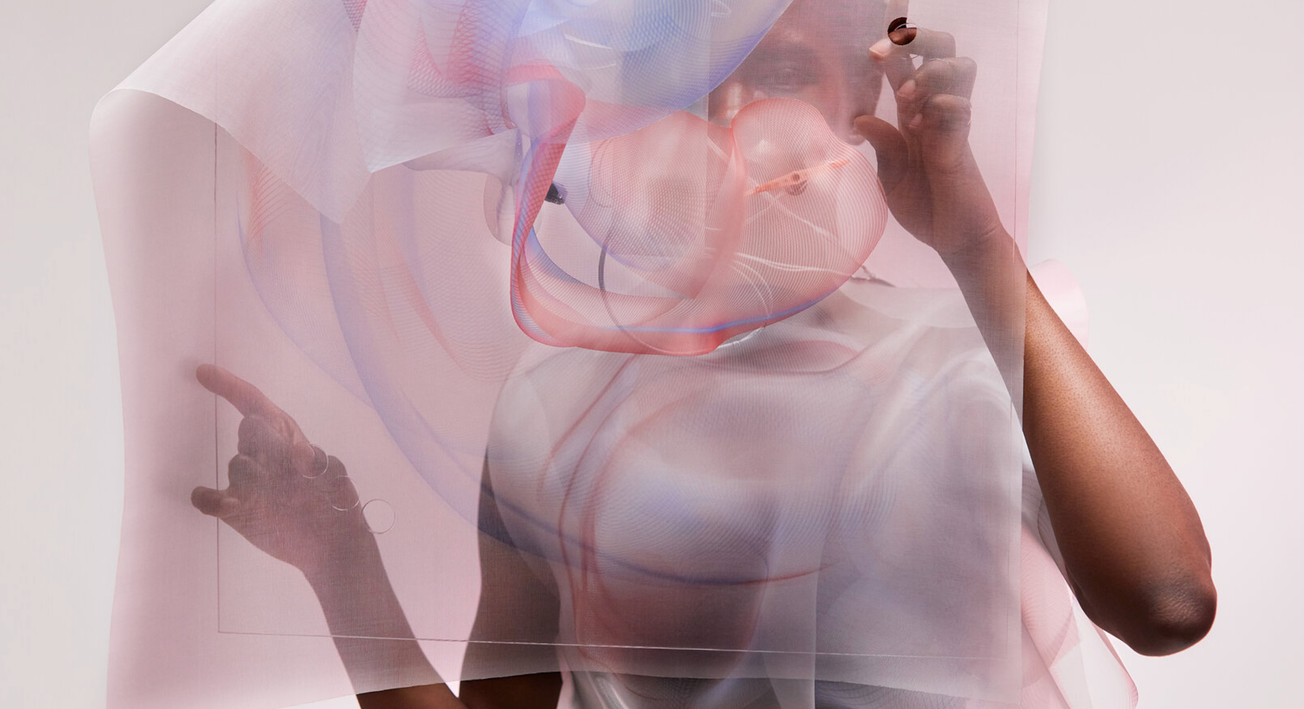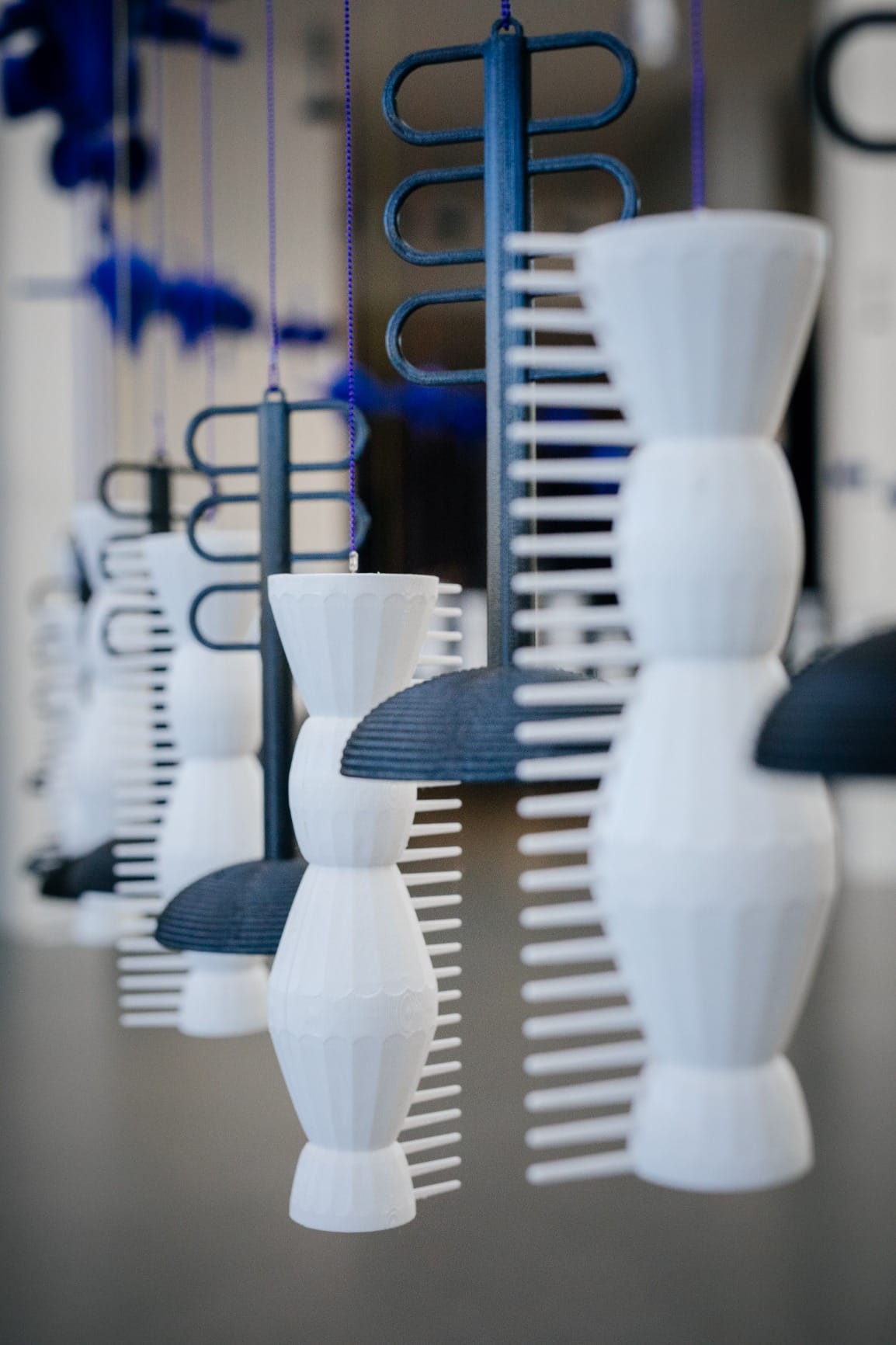FashionTech has made significant strides in enhancing garments' interactivity and responsiveness to external stimuli, ranging from embedded sensors, microcontrollers, and conductive thread to the integration of advanced fabrics and textiles. These technologies enable clothing to react to touch, motion, or environmental conditions, marking a notable evolution in the industry. Although some industry leaders have begun adopting new technologies in production and manufacturing, such as 3D printing and AI in customer analytics, few have embraced the development and application of responsive or interactive garment technologies at the mass-market consumer level.
With the recent attention on Adobe’s Primrose dress, we thought we would take a look at the current landscape of Responsive and Interactive FashionTech. In recent years, several figures and companies have emerged as leaders at the forefront of this developing field, including Anouk Wipprecht, CuteCircuit, Pauline van Dongen, Ying Gao, Hexoskin, and Loomia. This cohort ranges from highly exploratory and experimental to deeply practical applications improving lives, demonstrating the diverse terrain of this field is arguably still in its nascency.
Anouk Wipprecht: Dutch fashion tech designer Anouk Wipprecht has garnered international acclaim for her boundary-pushing designs that seamlessly integrate technology with couture. Wipprecht's creations often feature embedded sensors and microcontrollers, enabling garments to interact with the wearer's movements and external stimuli. Her innovative use of robotics in fashion has resulted in mesmerizing pieces that blur the lines between fashion, art, and technology. Wipprecht's approach emphasizes the fusion of aesthetics and functionality, with an emphasis on creating wearable technology that enhances the wearer's experience while pushing the boundaries of traditional fashion norms. In her recent wearable, “ScreenDress, digitally controlled eyes, operated by the wearer's mind, continuously monitor their cognitive load and activity, displaying the current level of brain stimulus. The 3D printed dress, adorned with moving eyes, seeks to illustrate the immediate connections between the wearer's actions and their brain's response to various movements. This mind-controlled garment operates via a brain-computer interface.
Credit: Anouk Wipprecht
CuteCircuit: Founded by Francesca Rosella and Ryan Genz, CuteCircuit is a pioneering fashion tech company known for its bold and innovative designs that incorporate interactive elements. The SoundShirt by CuteCircuit is an innovative wearable technology that enables deaf individuals to experience music through touch. This groundbreaking garment translates sound waves into vibrations, allowing wearers to feel the music as it plays. Each element of the music, such as melody, rhythm, and bass, is represented by different vibrations on different parts of the body, providing a rich and immersive sensory experience. The Sound Shirt has revolutionized the way deaf individuals can engage with music, opening up a new world of accessibility and inclusivity in the realm of sensory experiences CuteCircuit's approach to responsive fashion centers on playful experimentation and pushing the limits of what is possible with wearable technology. Their designs often prioritize user engagement and sensory experiences, creating garments that captivate and delight the wearer while showcasing the potential of technology to transform the fashion landscape.
Credit: CuteCircuit
Pauline van Dongen: Dutch fashion designer Pauline van Dongen is known for her commitment to sustainability and wearable technology. Van Dongen's creations often incorporate solar panels, conductive fabrics, and other technological elements to create garments that are both functional and environmentally conscious. Her approach to responsive fashion prioritizes innovation and sustainability, with a focus on creating garments that are as stylish as they are eco-friendly. Van Dongen's designs highlight the potential of technology to address pressing environmental challenges while revolutionizing the fashion industry. The design of the "MYSA" shirt responds to the alarming rise in work-related stress. This intelligent garment aims to induce relaxation by leading the wearer through breathing exercises, utilizing vibrotactile feedback.
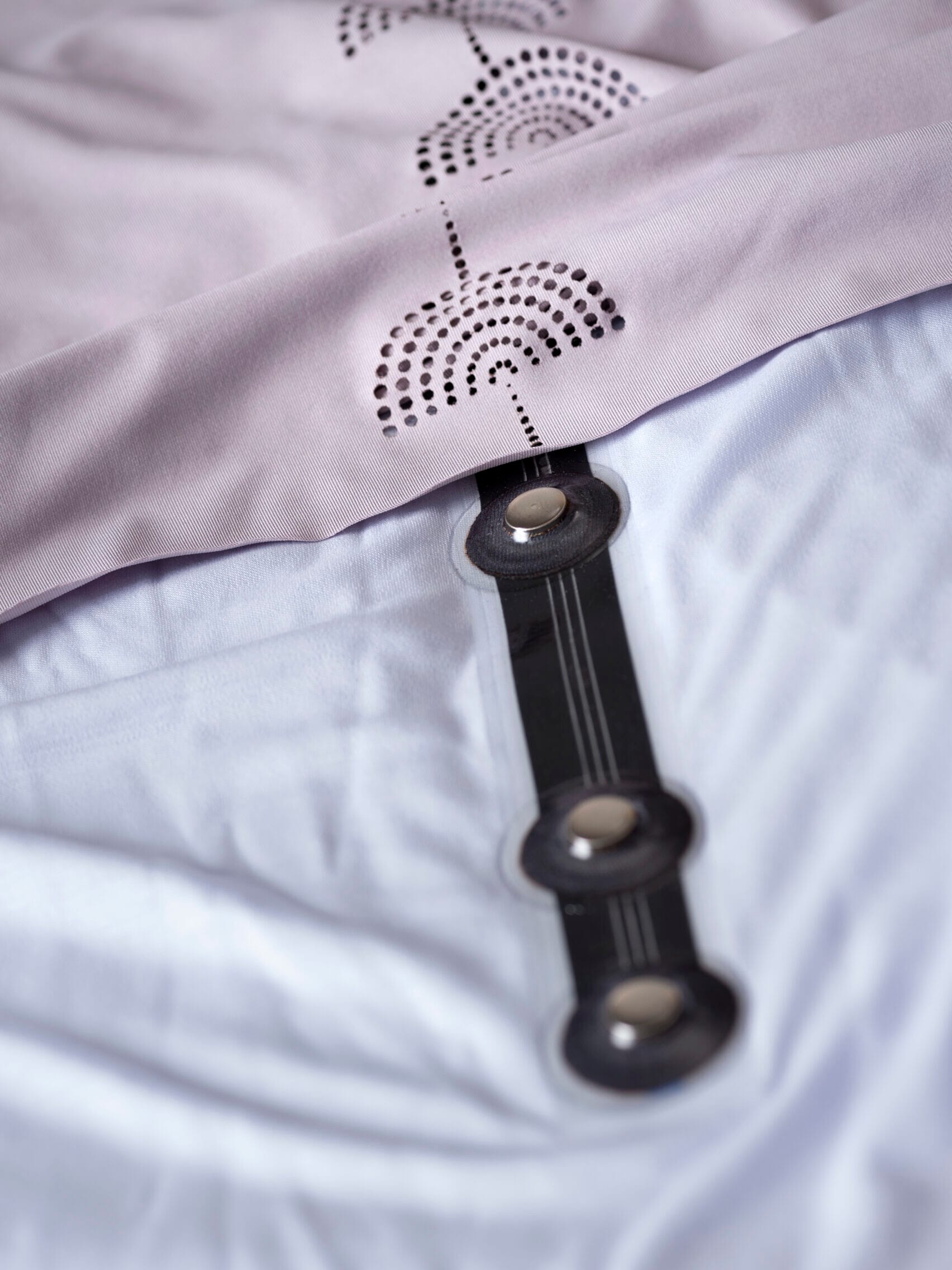
Ying Gao: Swiss fashion designer Ying Gao is renowned for her experimental designs that incorporate interactive elements and cutting-edge materials. Gao's creations often respond to stimuli such as sound, light, or movement, creating a dialogue between the garment and its surroundings. Her approach to interactive fashion is characterized by its poetic sensibility and emphasis on sensory experiences, inviting viewers to explore the relationship between the body and technology. "In Camera" is comprised of two garments fitted with camera lens detectors, which activate when photographed by individuals. Drawing inspiration from the portraits of British figurative artist Francis Bacon, who painted from photographs, these garments evoke hybrid and transient entities. Their ambiguity lies at the core of the project, encapsulated by the name itself: simultaneously private, alluding to moments behind closed doors (the literal translation of 'In camera'), and public, as they rely on the viewer/photographer's gaze.

HexoSkin: Hexoskin Smart Garments integrate textile sensors seamlessly into comfortable apparel, enabling precise and continuous monitoring of cardiac, respiratory, and activity metrics. Users can access, analyze, and visualize their data conveniently through the advanced Hexoskin Connected Health Platform. When co-founders Pierre-Alexandre Fournier and Jean-François Roy established the company in 2006, continuous reporting of comprehensive health data was not feasible with existing technologies. Hexoskin's central aim is the development of body-worn sensors for healthcare and advancing mobile and distributed software for managing and analyzing health data.
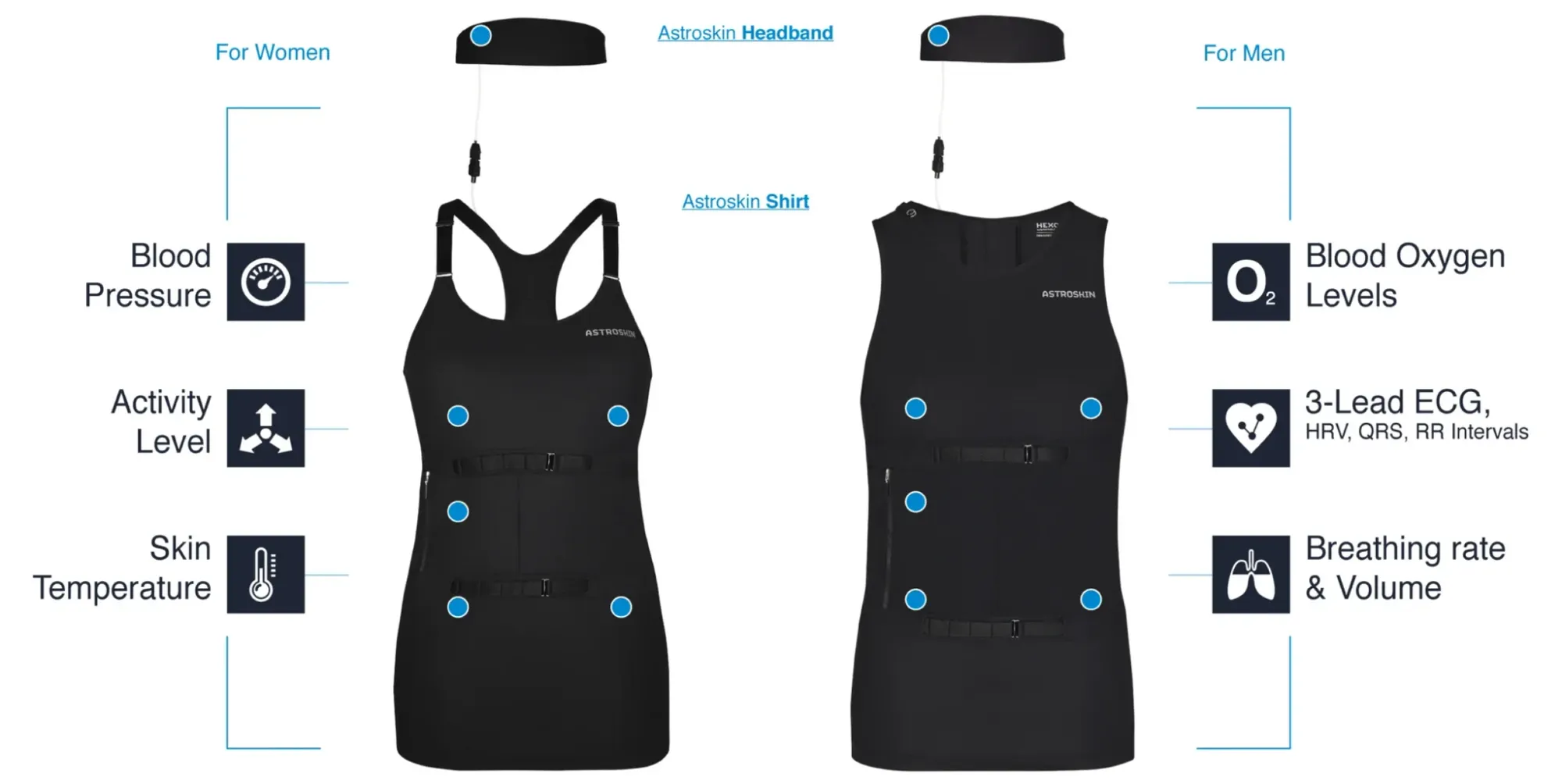
Astroskin offers real-time biometric monitoring for 48 hours, tracking all five vital signs. It provides accurate readings akin to an ambulatory heart monitor, integrating breath sensors, a pulse oximeter, and skin temperature sensors into a single washable garment and headband, eliminating the need for a finger pulse oximeter. It continuously monitors 3-lead ECG, blood oxygen levels, respiration, and skin temperature.
Loomia: Established in 2014 under the name "The Crated," Loomia originally operated as a design and technology studio. Collaborating with innovative clients revealed a common limitation in next-generation products, particularly wearables, due to available materials. Loomia develops soft, flexible circuits that would enhance engineering and design endeavors, crafting tools to create aesthetically pleasing yet highly functional products and seamlessly integrating electronics with soft goods.
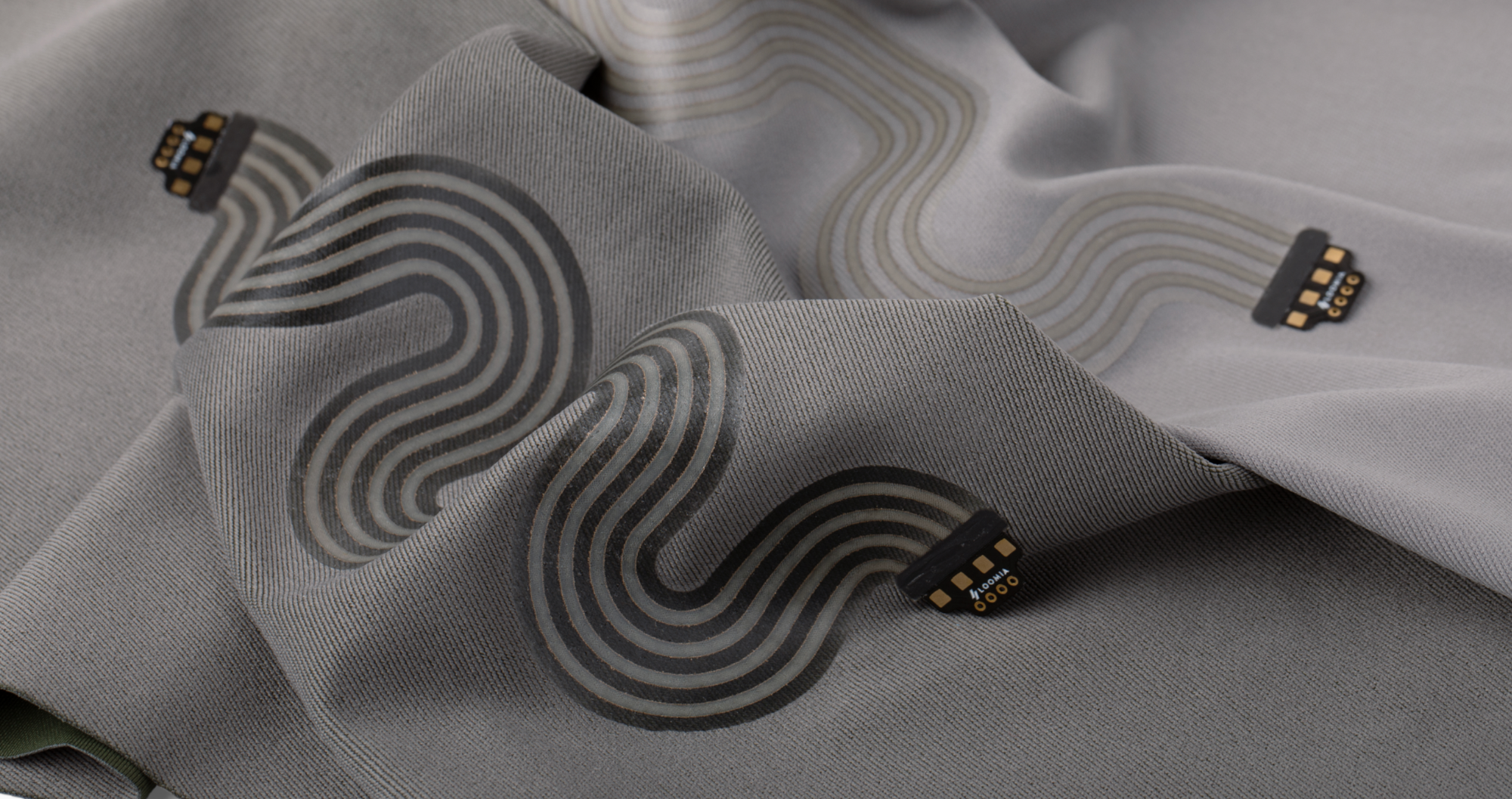
The Loomia Electronic Layer (LEL) is an e-textile circuit recognized for its ability to function in environments where conventional circuit boards may falter. It is a scalable circuitry solution with multi-axis flexibility, catering to companies seeking to design electronics tailored for high-motion regions.
Each of these leading figures and companies brings a unique perspective and approach to the development of responsive fashion, pushing the boundaries of creativity and innovation while redefining the possibilities of what fashion can be. As technology continues to advance, we can expect to see even more exciting developments in this rapidly evolving field, shaping the future of fashion in unprecedented ways.

